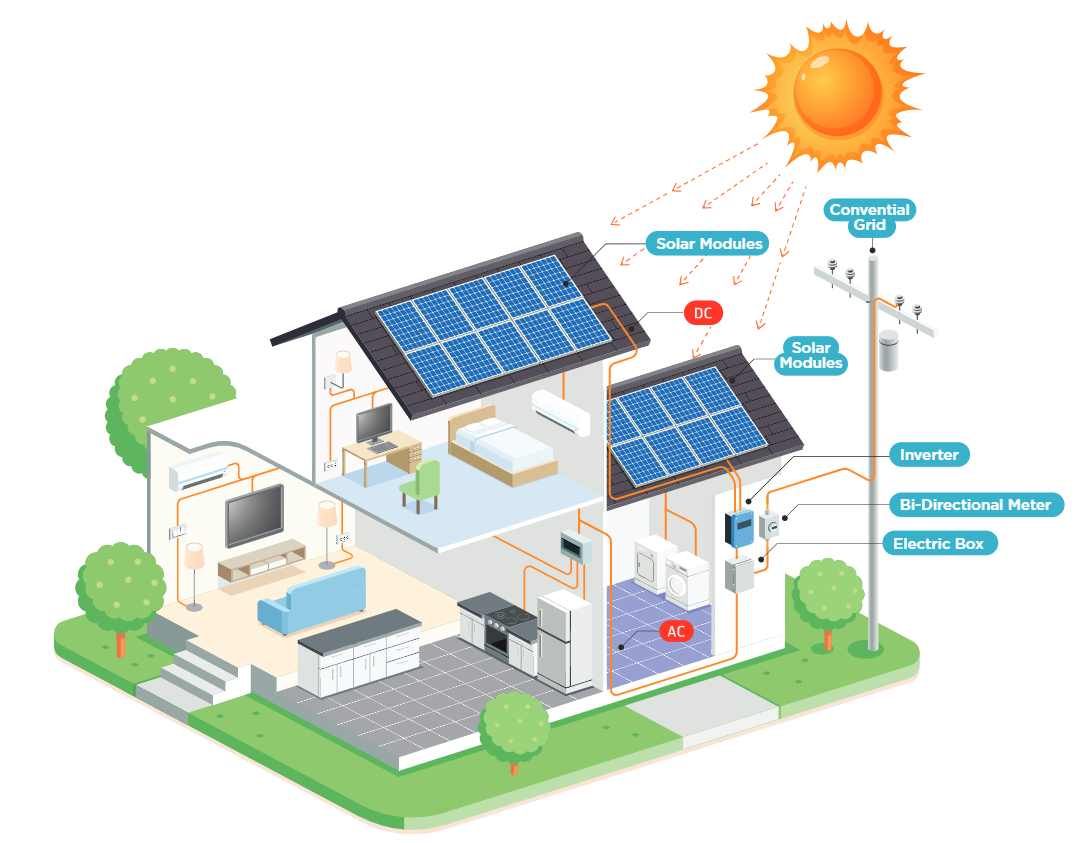Solar On-Grid System
Description:
- The solar panel generates DC current when exposed to sunlight.
- DC current generated is then converted into AC current using the solar inverter.

- The solar inverter is capable of supplying single phase as well as 3 phase AC current as per requirement.
- Electricity generated from the solar plant is combined with grid power to fulfill the load requirements.
- Using a net meter (State’s net metering policy) excess power generated can be sold to the grid and credits can be earned in the monthly bills.
To get your own solar plant contact us.
Advantages:
- Grid-tied systems are a comparatively cheaper option, as it does not need batteries and other equipment reducing the cost by at least 40%.
- Grid-tied systems generally produce more energy than needed for home usage and the excess power is stored onto the grid for further use at night or during cloudy days. This is called Net-Metering.
- Users can also sell the stored power or the Solar Renewable Energy Credits (SRECs) and income extra.
Disadvantages:
- This type of solar system is dependent on the grid. The system shuts off when the grid is down and there is no power.
- If you face frequent power cuts in your area then a Solar Off-Grid system or Solar hybrid system should be preferred.
